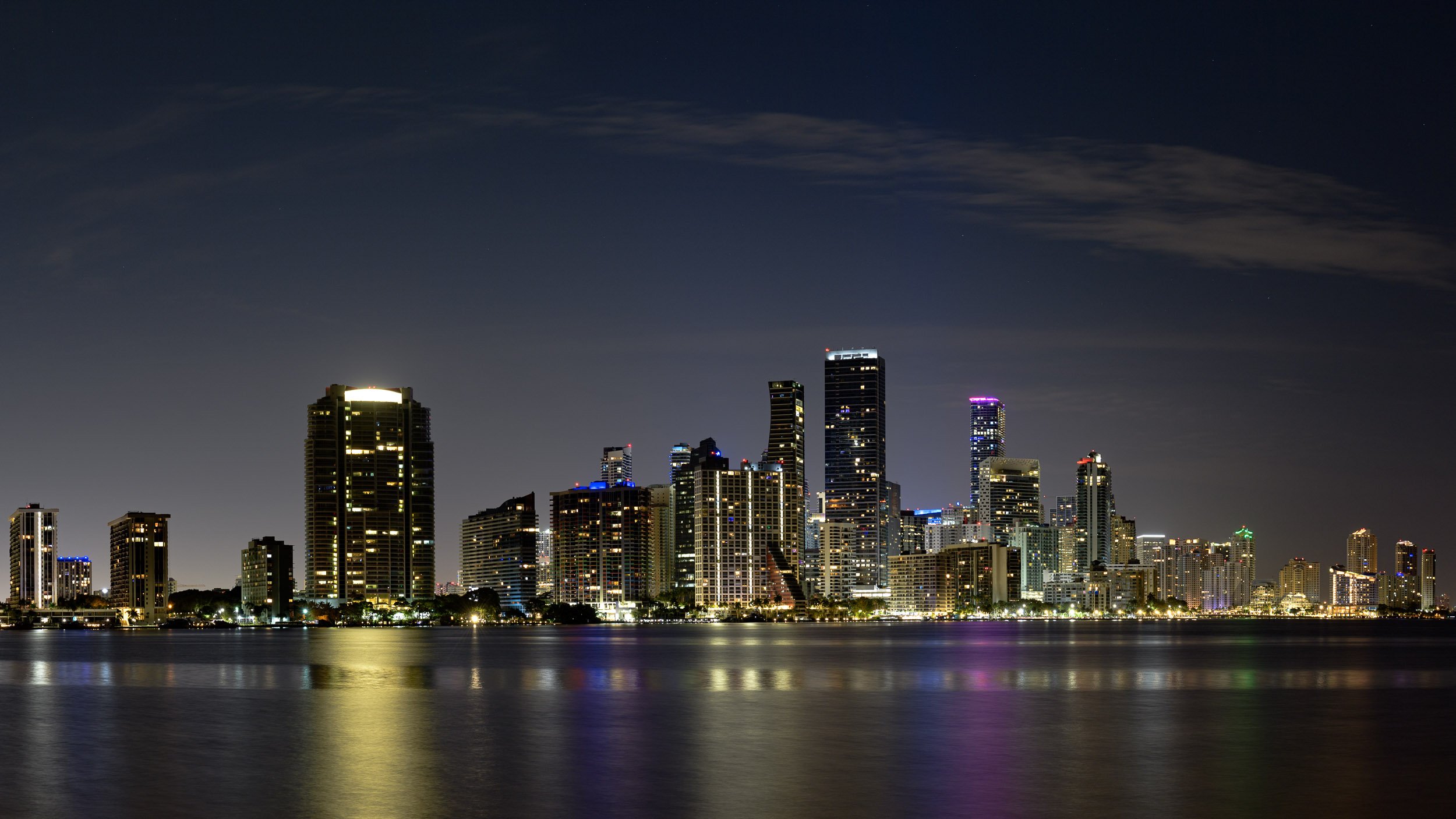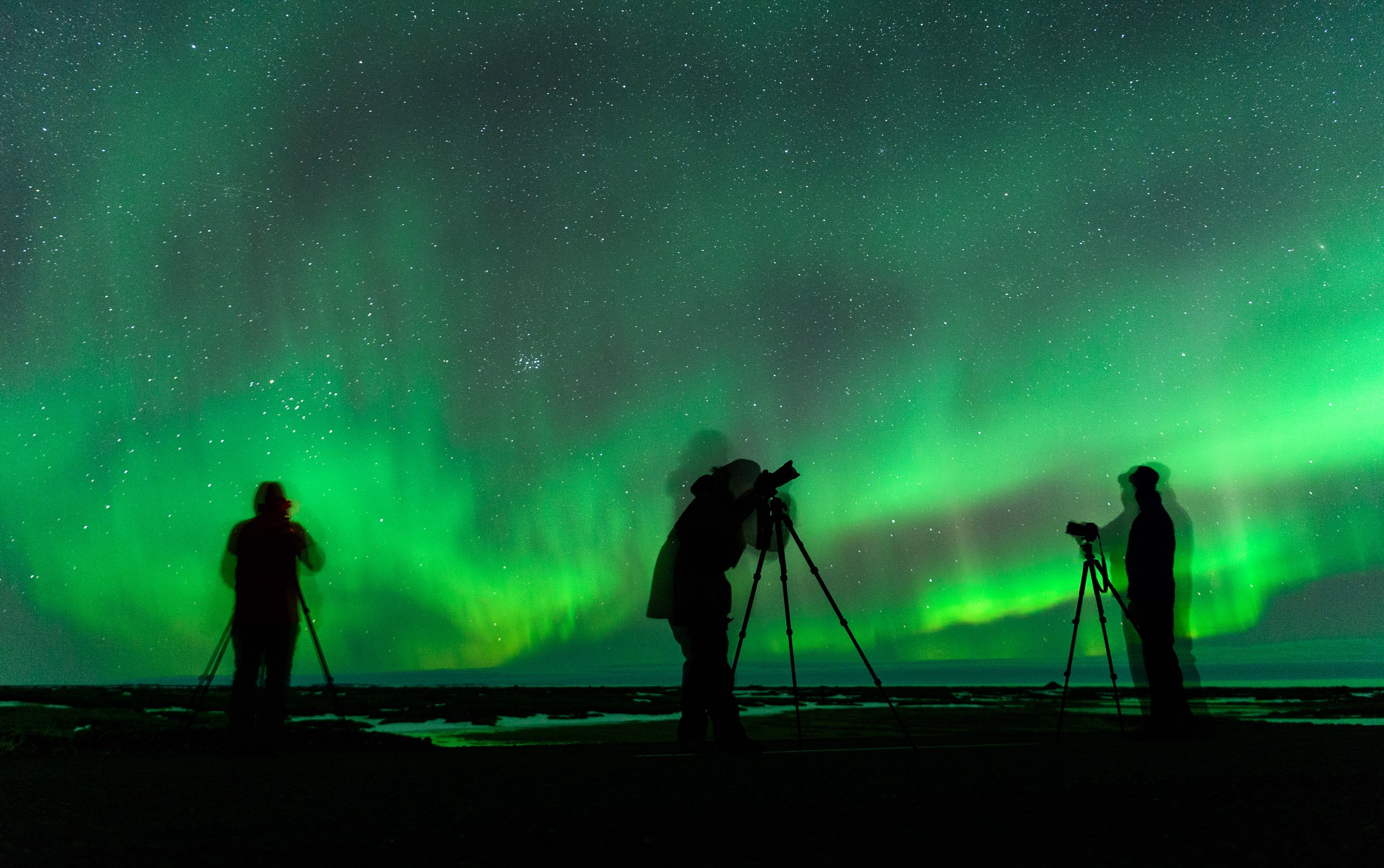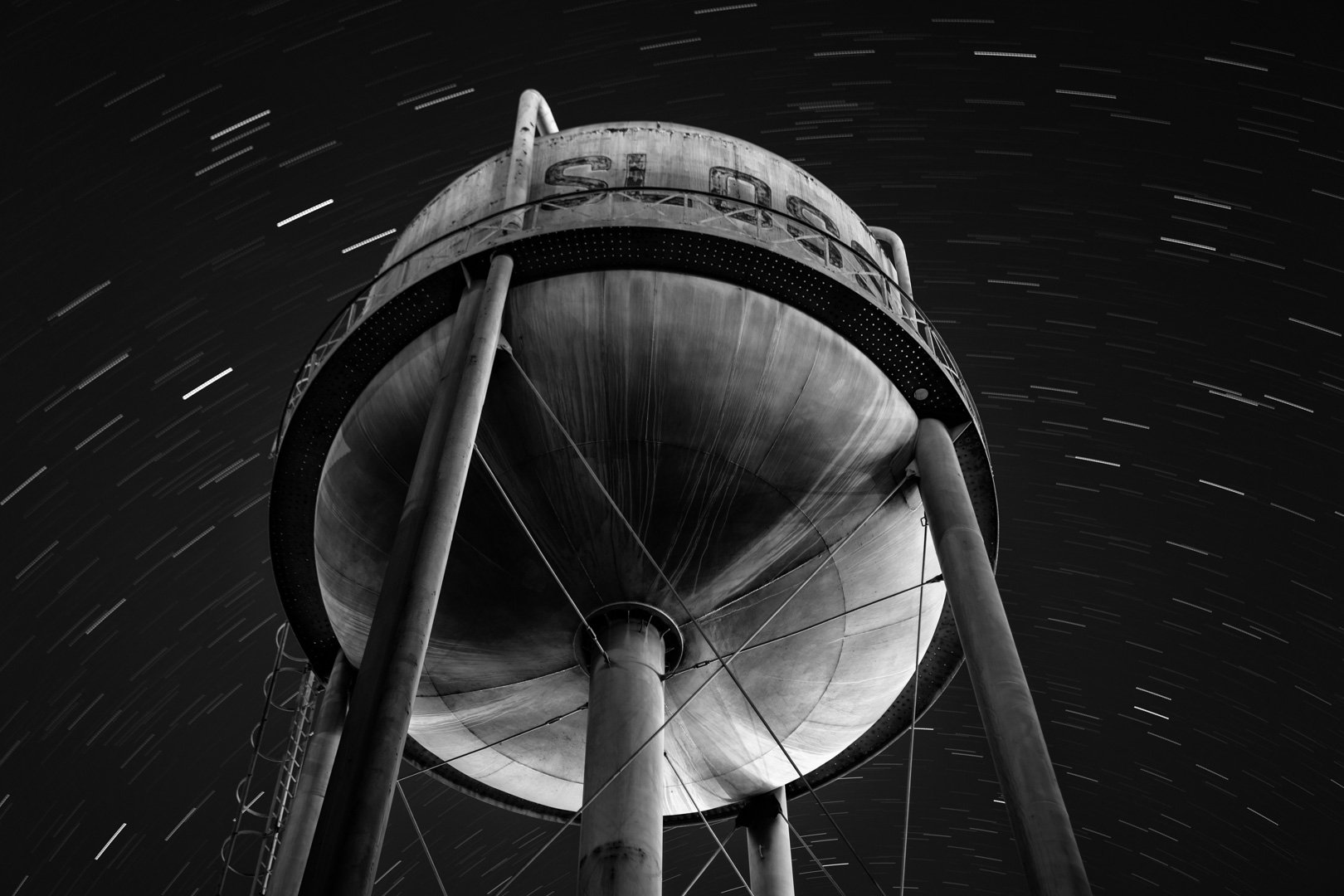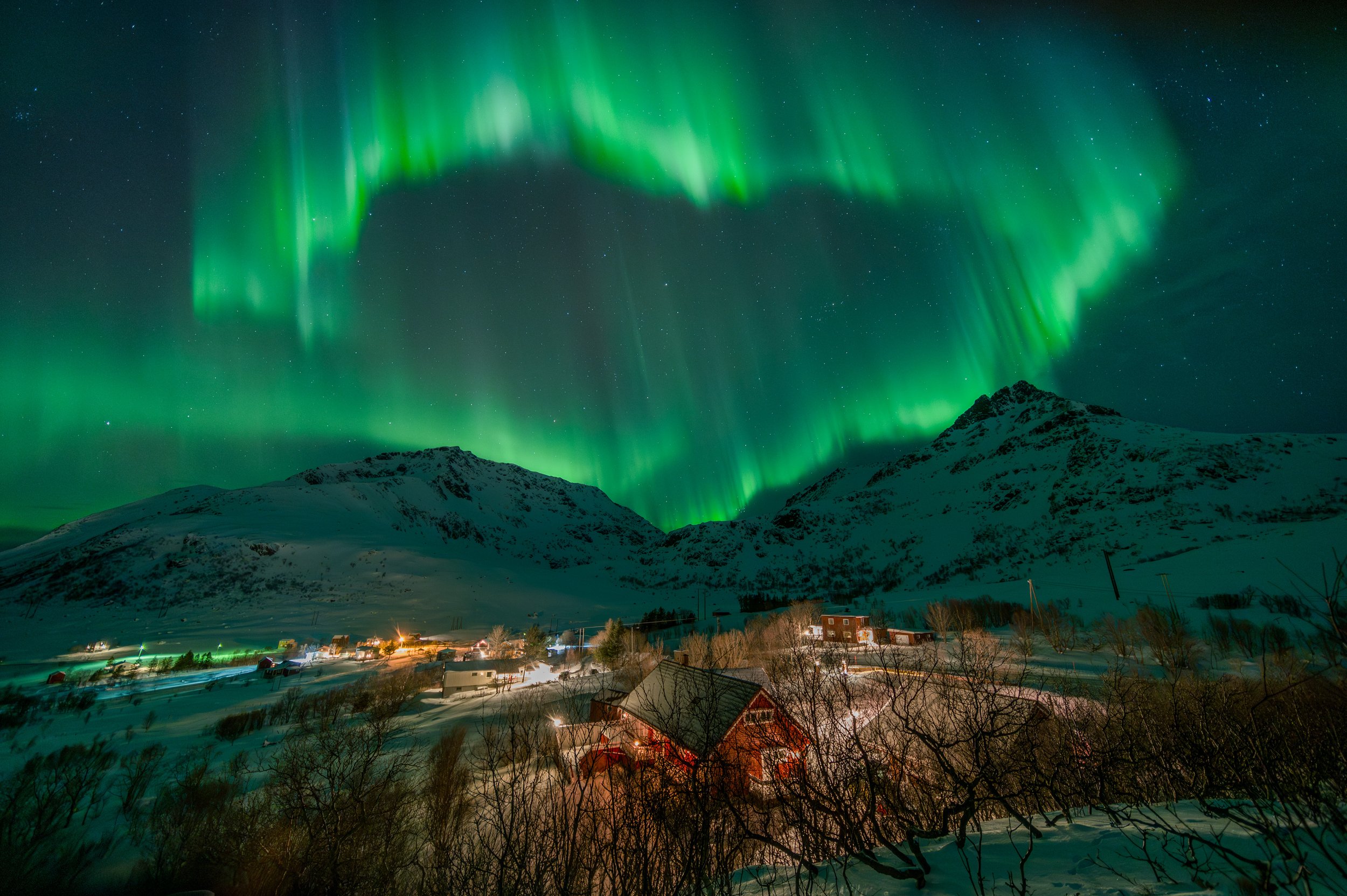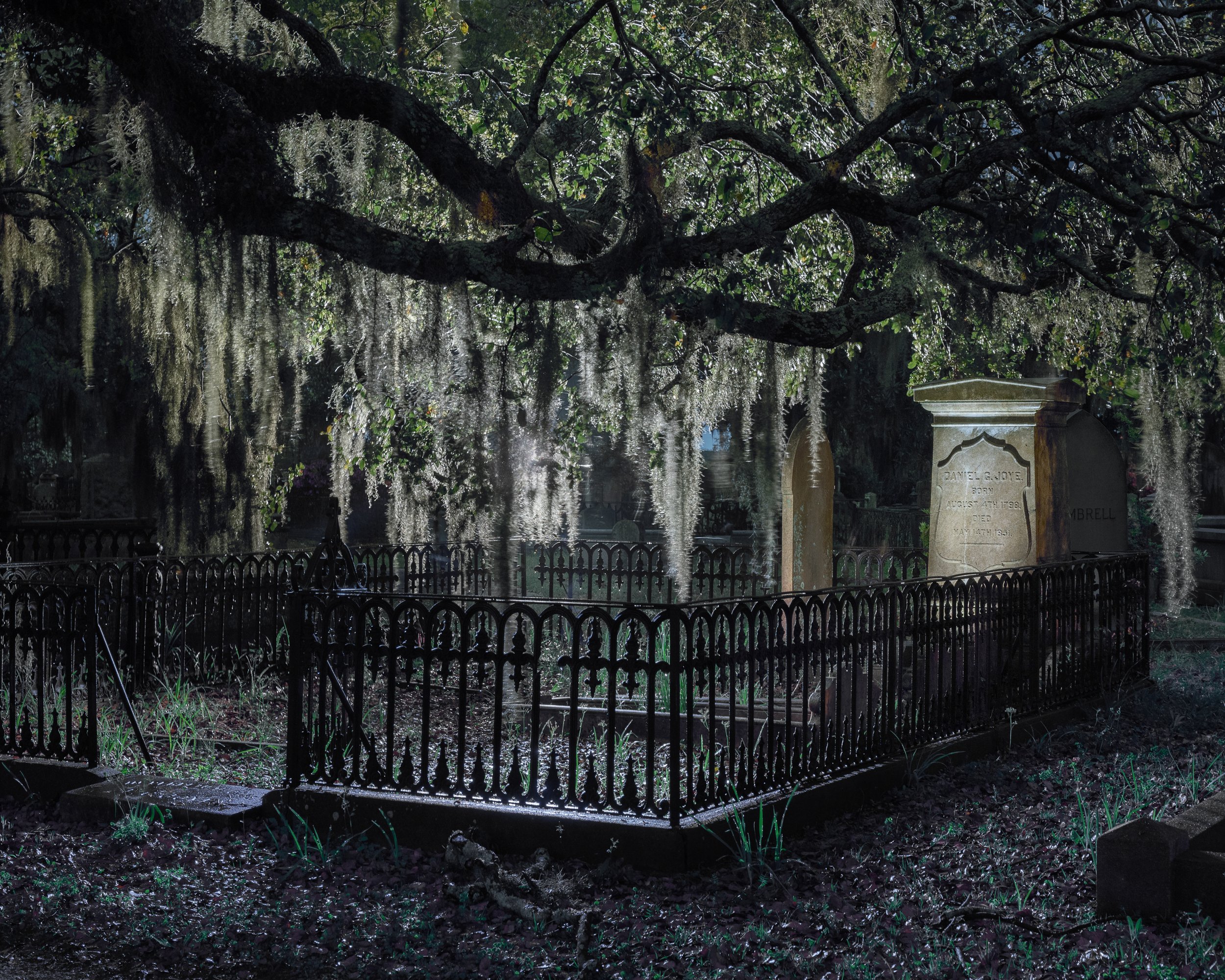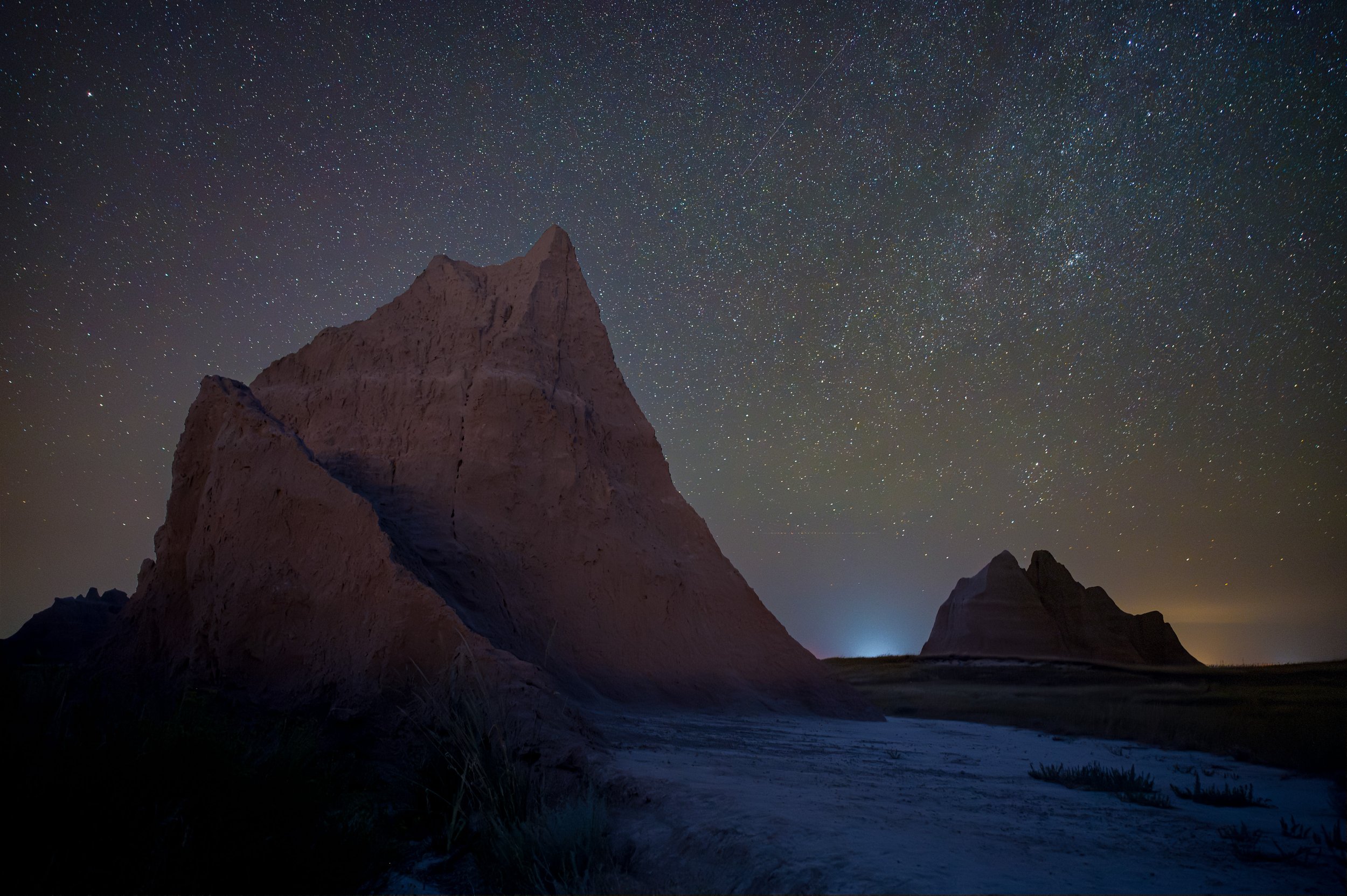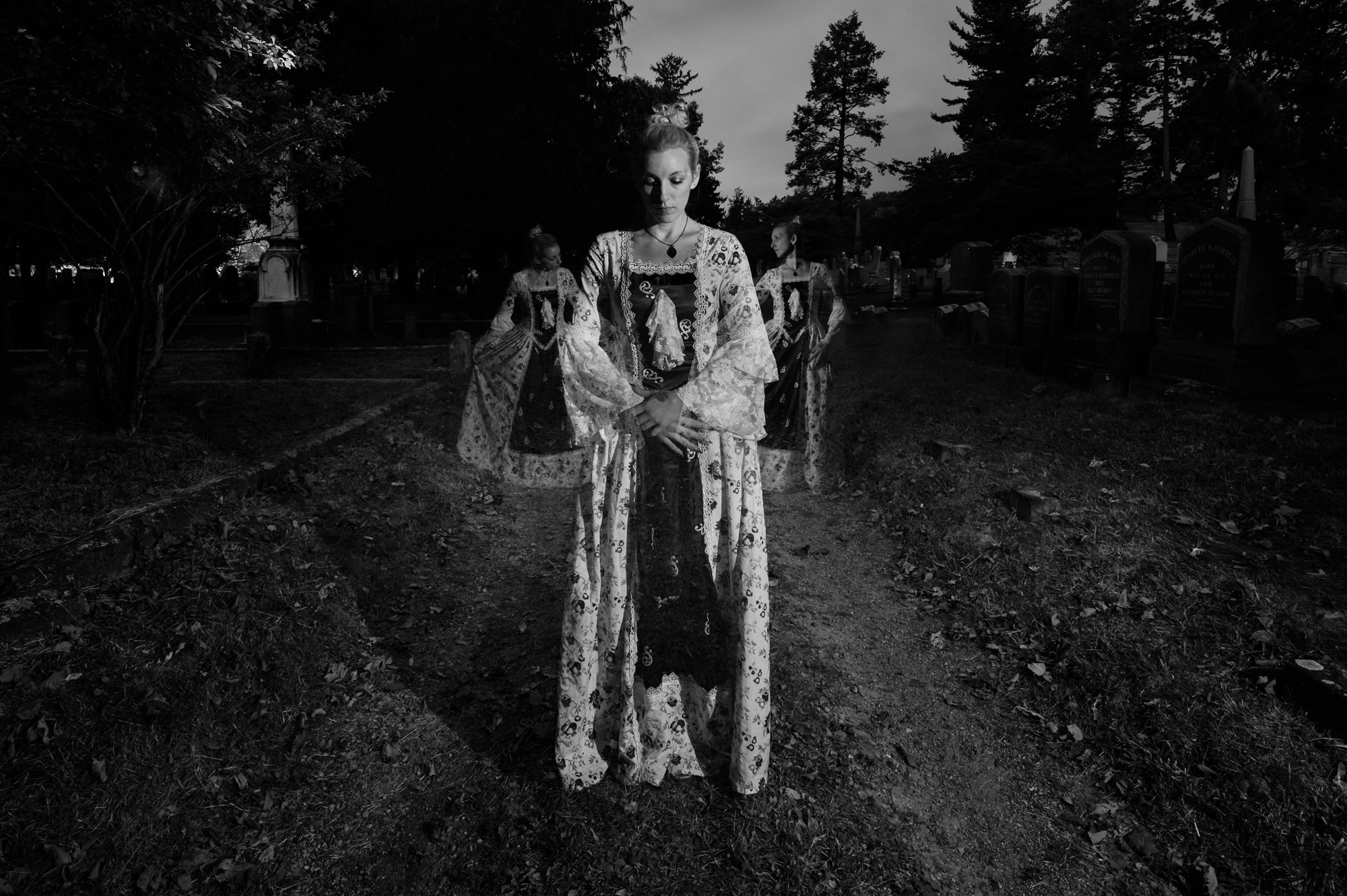Halloween. The time of year when fright seems right. Ghouls and goblins, phantoms and fantasy—crisp leaves floating from trees, a frosty chill in the breeze—all meld to make us feel unsettled … uneasy … unsure of what lingers in shadows.
That, of course, can scare up our creativity and inspire us to photograph subjects that by nature seem to belong to the night. And one of the obvious choices is cemeteries.
Last year Lance Keimig wrote about “Working in (and with) the Dead of Night,” which explored topics such as photographing in rural versus urban graveyards, modern versus historic sites, seeking proper permission, safety, lighting and more. This year, we decided we’d each choose one of our favorite cemetery night images and share the story behind it.
So come with us, into the boneyards at night, above the tombs, amid the doom of Allhallows Eve. We promise: There’s nothing to be afraid of in the dark. (Except for intervalometers. They can be kind of scary.)
Greenwood Cemetery
by Gabriel Biderman
Greenwood Cemetery, Brooklyn, New York. Fujifilm X-T1 with a 10-24mm f/4 lens. HDR blend of seven images made at f/8 with different ISOs and shutter speeds.
History and proximity have made Greenwood Cemetery one of my favorite places to photograph.
The idea of a large modern cemetery that we are all familiar with did not exist in America until 1831. In fact, the transition from small family plots to “rural cemeteries” ushered in the era of our first public parks. That’s right—cemeteries like Sleepy Hollow, Greenwood and Woodlawn were known for their rolling hills, winding paths, extravagant stone work and scenic views, and were visited by the masses for their peaceful sylvan feel in a quickly industrializing age. Ironically, these sprawling cemeteries would later inspire more green spaces like Central Park and Boston Common.
I’ve long been fascinated with these elegant outdoor museums and their dichotomy against the modern urban landscape. And I’m not the only one—the statue of Minerva in Greenwood Cemetery was placed at the highest point in Brooklyn facing and saluting her sister in the sea, Lady Liberty.
One night, I wandered around Greenwood looking for more intriguing intersections between the bright lights of the living and the darker city of the dead. That’s when I found this scene. According to the Ancient History Encyclopedia, obelisks have been a powerful symbol since ancient times, and they were often raised in pairs “keeping with the Egyptian value of balance and harmony; it was believed that the two on earth were reflected by two in the heavens.”
This is one of my favorite pictures of Greenwood, taken soon after the completion of One World Trade Center. Balance and harmony.
Burial Hill Cemetery
by Lance Keimig
Burial Hill Cemetery, Plymouth, Massachusetts. Canon 5D Mark II with a Nikon 50mm f/1.4 lens. 43 seconds, f/2, ISO 320.
Somehow I often find myself wandering alone in graveyards at night. I’m not inclined to dress in black––the goth look or lifestyle doesn’t really suit me—but I do find solitude in these somber places. I’m not prone to getting creeped out, so spending some time wandering among the stones, taking time to read the inscriptions and wondering about the lives of those who ended up below my feet, is at once stimulating and relaxing.
There are so many beautiful graveyards I’ve visited in my travels: Hólavallagarður in Reykjavik, which probably contains half of the trees in Iceland in a couple of square blocks; Père-Lachaise in Paris, the final resting place of Molière, Chopin and Jim Morrison; Sleepy Hollow in Tarrytown, New York, of Headless Horseman fame; or any number of churchyards in the west of Ireland with their gorgeous Celtic crosses.
I think my favorite has to be Burial Hill in Plymouth, Massachusetts. This cemetery—in the place where the Pilgrims established the first permanent colony in North America—is rich in history and is the final resting place of many of the Mayflower passengers and descendants. It’s also quite photogenic and contains a fascinating collection of well-preserved headstones dating back to the 17th century.
The stone pictured above marks the grave of Joshua Bramhall, who died in 1763. The exceptionally spooky carving on the slate is unlike any other I have seen in any Colonial New England cemetery.
I used a 50mm lens at a wide aperture for shallow depth of field, and a low camera angle to come in tight on the stone with minimal distortion. I lit the stone from directly above with a Coast LED flashlight to emphasize the carving and the lichen. In addition to the frightening face with the crazy hair, also interesting to note are that the carver’s guidelines are still visible, lightly etched into the slate to mark the place where the inscription would go.
Clonmacnoise Monastery
by Matt Hill
Clonmacnoise, Athlone, Ireland. Nikon D750, Zeiss 15mm Distagon f/2.8 lens. 91 seconds, f/4, ISO 100.
My wife Mabel and I were on tour around Ireland, driving spontaneously from place to place and finding a bed-and-breakfast each evening wherever we were. It was a simply magical way to experience the west and north coasts of this beautiful island nation.
We were so enchanted with the countryside that we decided to skip cities and drive straight from the Giants Causeway back to the west coast. We saw that the monastery of Clonmacnoise was along that route and we chose a B&B nearby, in the town of Athlone. Upon arrival we asked our hosts if it was possible to enter the cemetery at night. They grinned and informed us that if we chose to visit the local graveyard, there just happened to be an open gate from that to Clonmacnoise (wink!).
We went at dusk and encountered a local camera club finishing up their sunset/twilight shoot. Lovely people. They were, however, surprised that Mabel and I were staying for moonrise. I guess they were not night photographers.
As the moon was ascending, it turned into a crisp, strong light source that etched the cathedral, churches, high crosses, round towers and graveslabs. I found it very hard to leave. I was enthralled.
I framed the moon behind the high cross and used the bright sky and light clouds to create a halo effect and to etch the shapes of the structures. I went far to the left and right to light paint the grass, cathedral wall, graveslabs, high cross and the one small headstone.
To this day, the memory of that trip beckons me to return to Ireland. And we shall.
Terlingua Cemetery
by Tim Cooper
Terlingua, Texas. Nikon Z 6 with a Nikon Z 24-70mm f/4 lens, light painted with a Coast HP5R flashlight and a Luxli Viola. 2 minutes, f/4, ISO 200.
I’m not sure why I love photographing graveyards, but I do. Maybe it’s the location—so many cemeteries seem to be set in beautiful areas. Perhaps it's the ornate headstones, although I find the simple ones just as attractive. Maybe it’s the repetition of the shapes—I’ve always been a sucker for patterns. Whatever it may be, I am definitely drawn to graveyards for night photography.
Just last week I had the pleasure of photographing in one of the most unique cemeteries I’ve ever visited, in the ghost town of Terlingua, Texas. This extraordinary little town was the home base for our Big Bend National Park workshop. This image was made during our first night’s shoot while I was working with a gentleman who was very new to night photography. He and I set up this shot so I could demonstrate the basics of light painting.
The repetition of the crosses immediately caught my eye and I knew I wanted to highlight them against the dark overcast sky. We began by finding an ambient exposure that provided both a dark sky and enough time for me to wander around the scene to light paint with my Coast HP5R. Next we set up a Luxli Viola on a small travel tripod behind the front-right headstone to provide the main source of backlight. After some tweaking we found the right balance between the Luxli and the sky.
Once these two were balanced I began walking through the scene to paint the different areas I wanted to highlight. While the crosses were the hero of the shot, I did want to subtly illuminate the stone structures and the falling fence so the crosses were not floating in a sea of darkness. The trick here was the amount of time spent illuminating each item. The crosses reflected much more light than the stones, so it took many attempts to get the balance just right.
Finally, after 12 attempts, I made the image you see here. I hope it was a great learning experience for the attendee, as it demonstrated not only many different angles and levels of illumination, but also the fact that not even seasoned night photographers get the shot right on the first try.
Sleepy Hollow Cemetery
by Chris Nicholson
Sleepy Hollow Cemetery, Sleepy Hollow, New York. Nikon D3s and 24-70mm f/2.8 lens, light painted with a Coast HP7R flashlight. 6 minutes, f/7.1, ISO 200.
Like many Americans, especially those from the Northeast, Sleepy Hollow holds a chilling place in my nostalgia. As a kid I of course read the story The Legend of Sleepy Hollow, and on a class field trip I even saw the play. I watched a movie adaptation on TV, though I don’t remember if it was the Jeff Goldblum or Shelley Duvall version. Maybe it was both. One thing I am sure of is that I had a healthy fear of decapitated equestrians. As we all should. (Though, come to think of it, riding a horse that well when you don’t have a head is actually a rather impressive skill.)
Because of the truly legendary status of the story, when I learned that three of my NPAN business partners had standing permission to photograph at the Sleepy Hollow Cemetery at night, I suggested an autumn outing there. We photographed right in the middle of Halloween season, which, as you can imagine, is high time to be in the area. There’s a festival, which includes live music, a street fair, hot cider and donuts, and (obviously) a horseman without a head.
It was all entertaining (and delicious), but for me the real fun of the night was photographing in the cemetery. The old gravestones, vaults, mausoleums, memorials, chapel and such—as well as the rustic charm and mystique—make for an inspiring setting for night photography.
We spent a few hours photographing many of those features, working individually and in teams. But it wasn’t until my final setup of the evening that I finally created an image I really liked: a long exposure in the mid-1850s Cooper plot.
The exposure part was easy, as it was just a 6-minute opening of the shutter, which with a 62mm focal length and the camera facing west was plenty of time for the stars to trail.
The light painting, however, took nine tries to get right. Standing to the right of the frame, I painted from a 90-degree angle with the focused beam of a Coast HP7R, which made the lettering of the gravestones stand out. But at that extreme an angle, standing 15 feet away, my aim had to be precise. As I got each stone to look right, I made a mental note of exactly where I was standing and aiming, as well as how many seconds I lit each marker. Then I put it all together for the final exposure.
You might say the precision and the detail required to light this simple scene were enough to make one lose their head. (I’m sorry.)
Have you photographed in a cemetery at night? Share your images and stories in the comments below or on our Facebook page.

